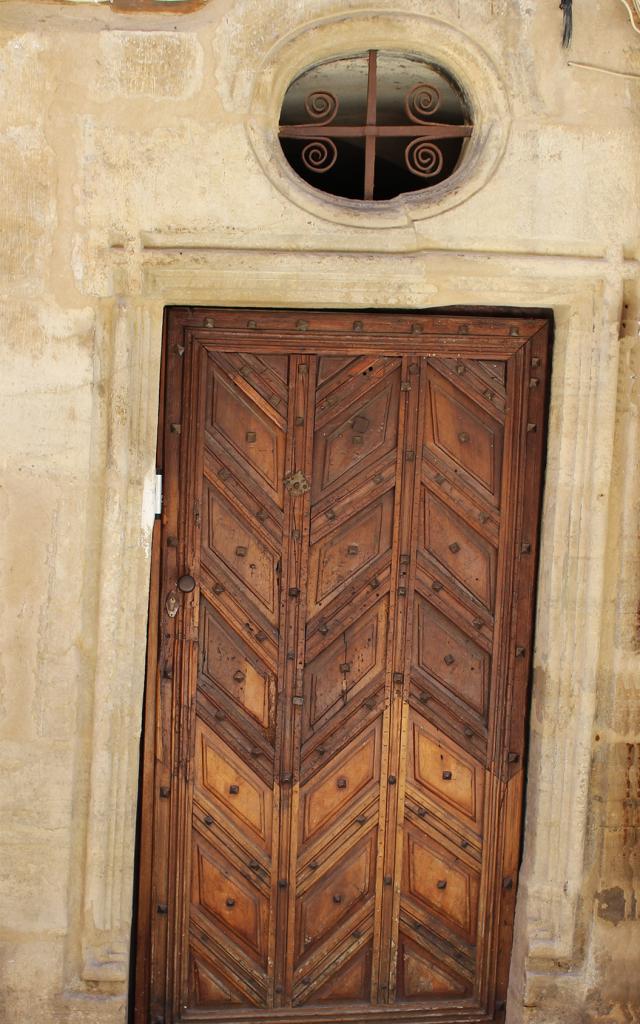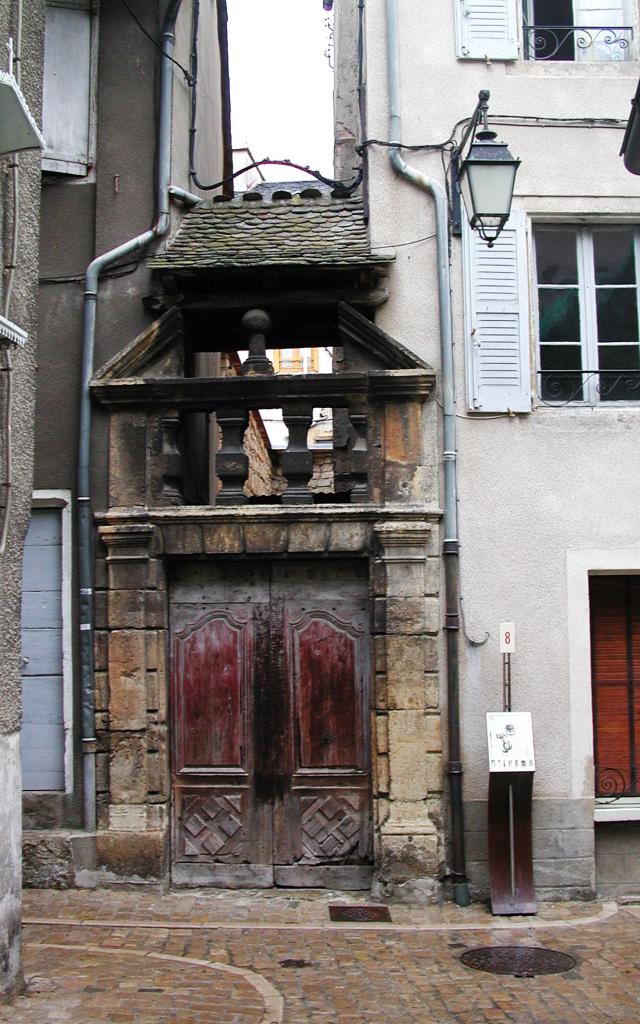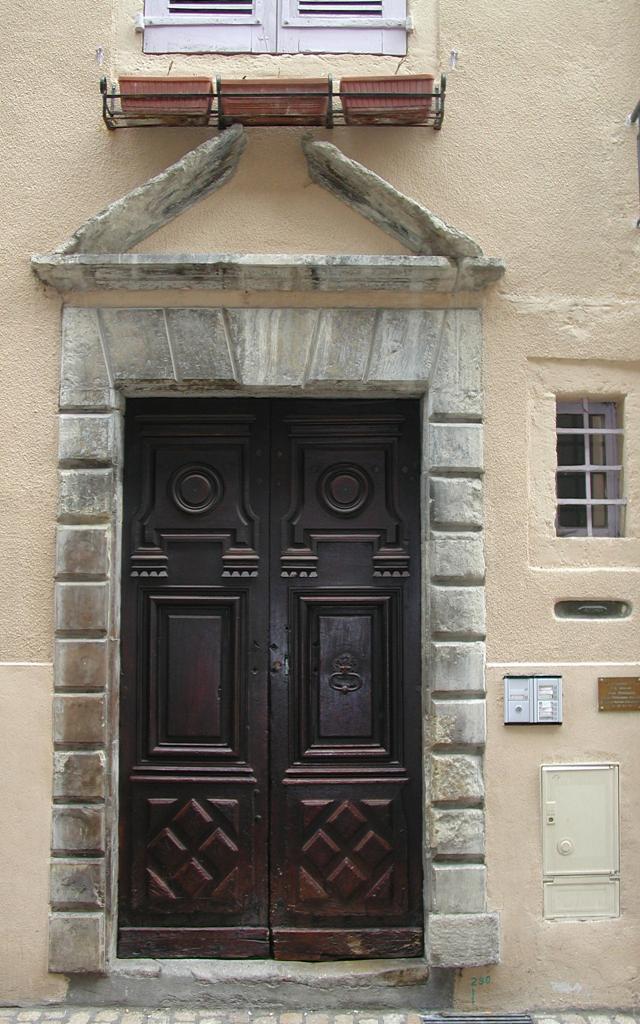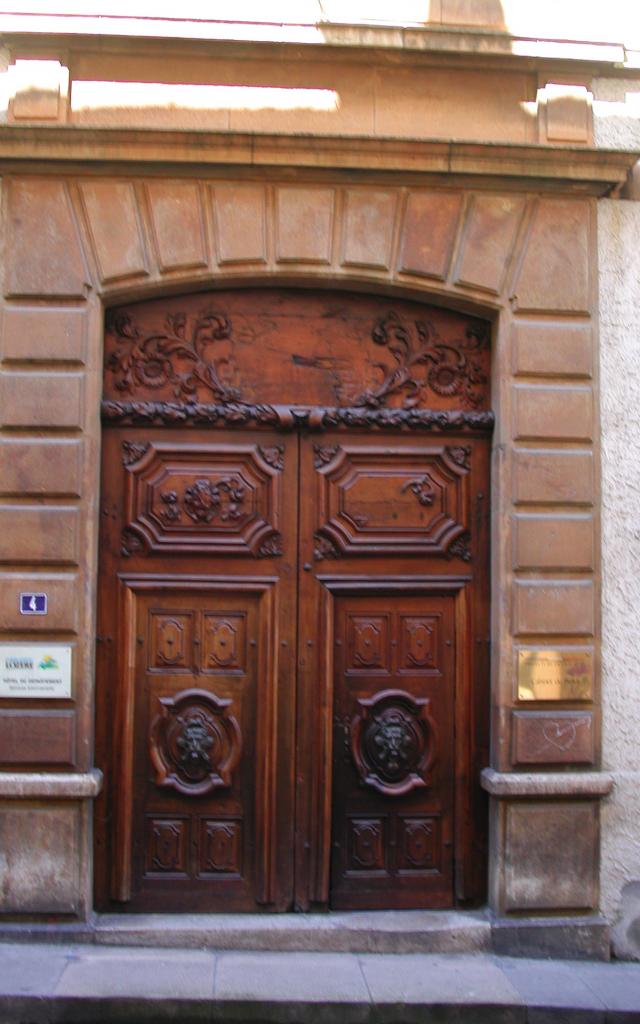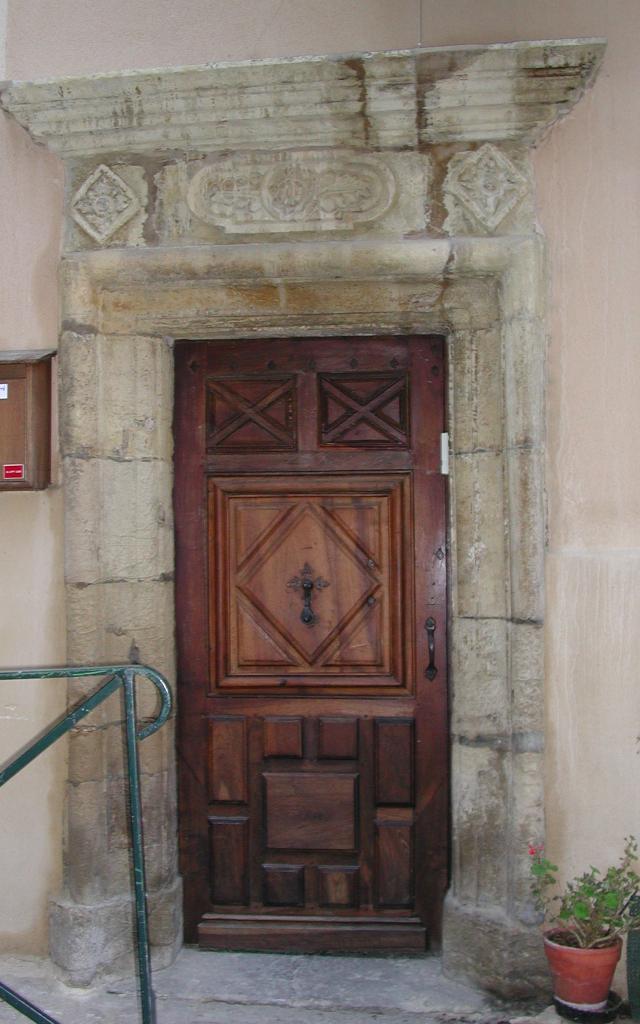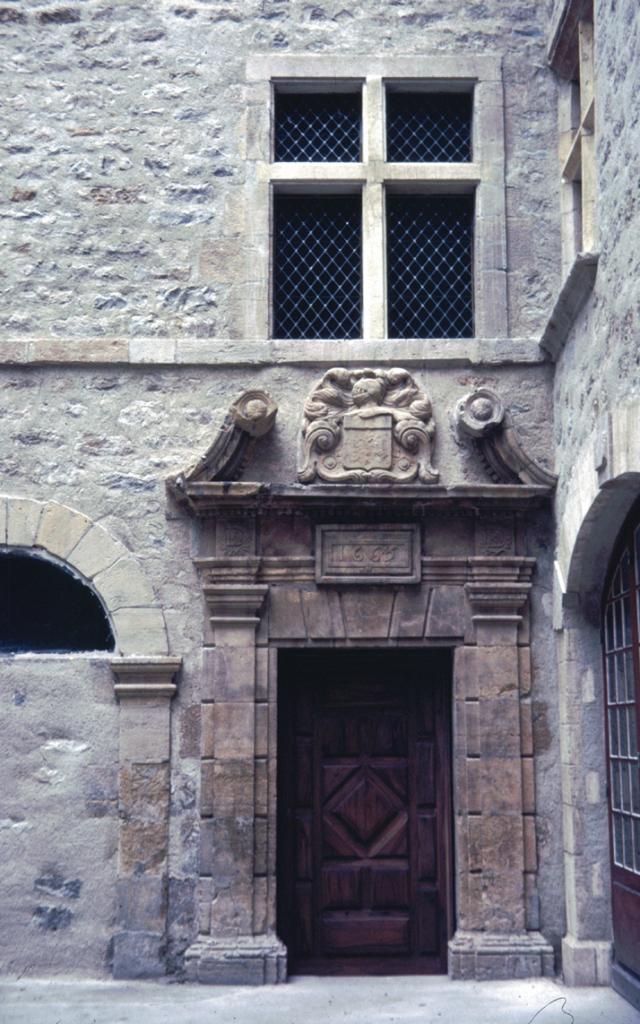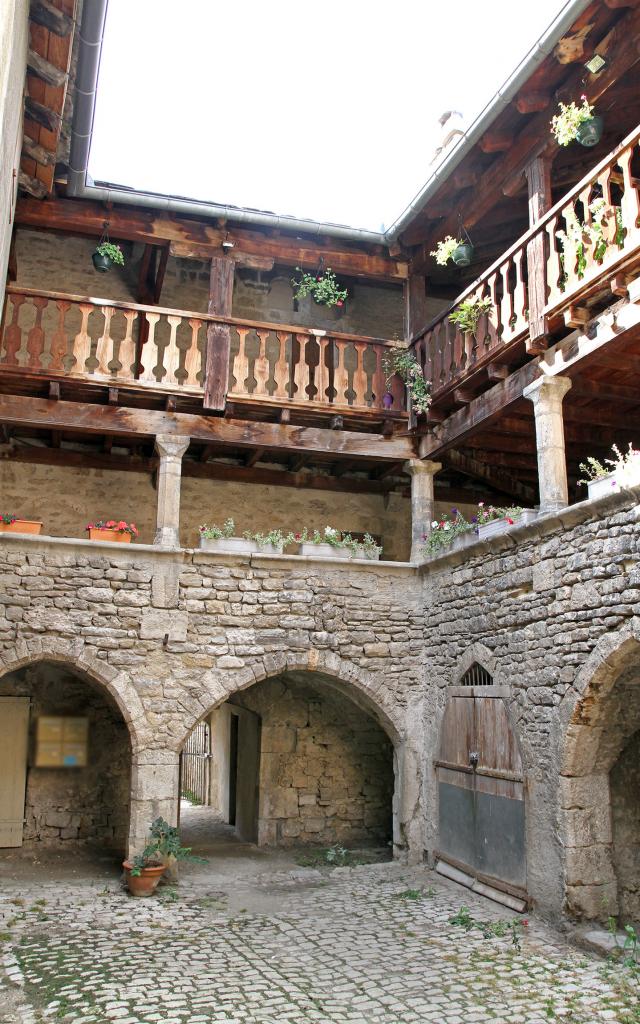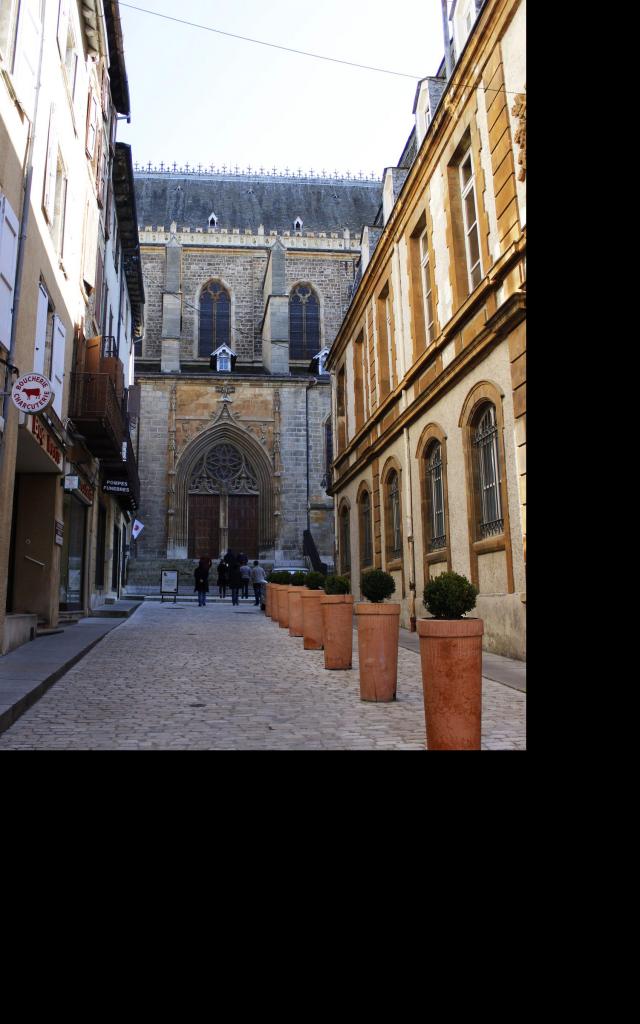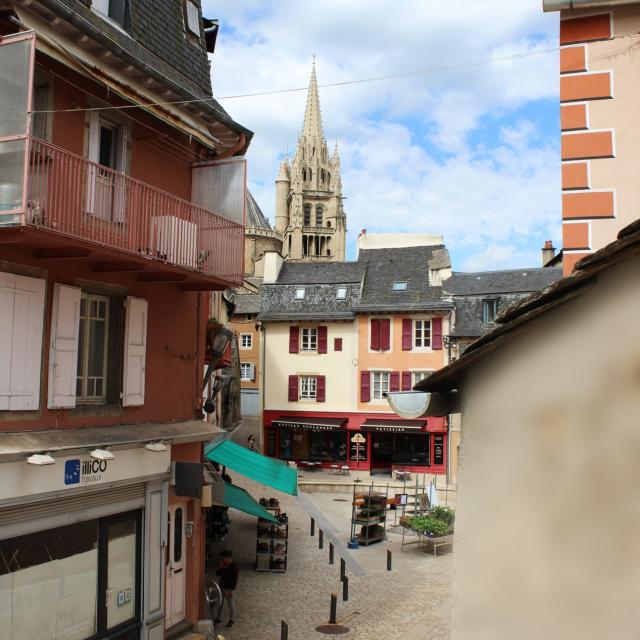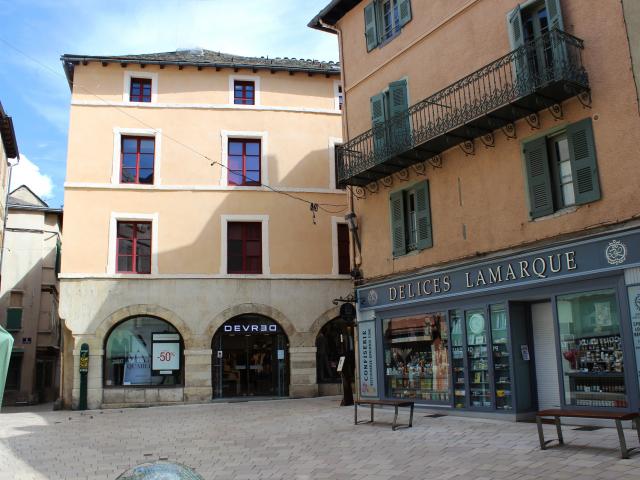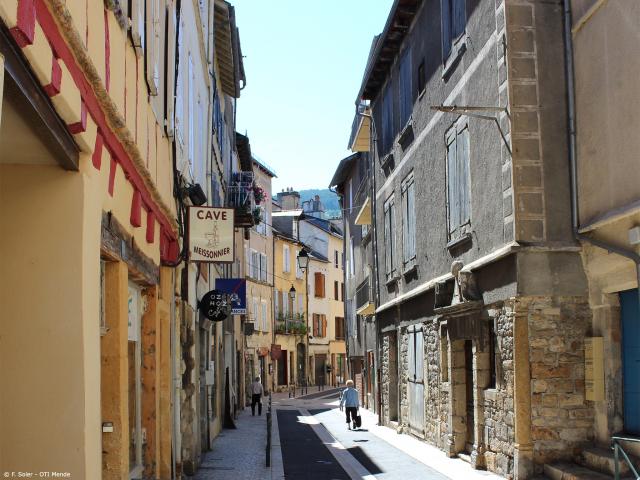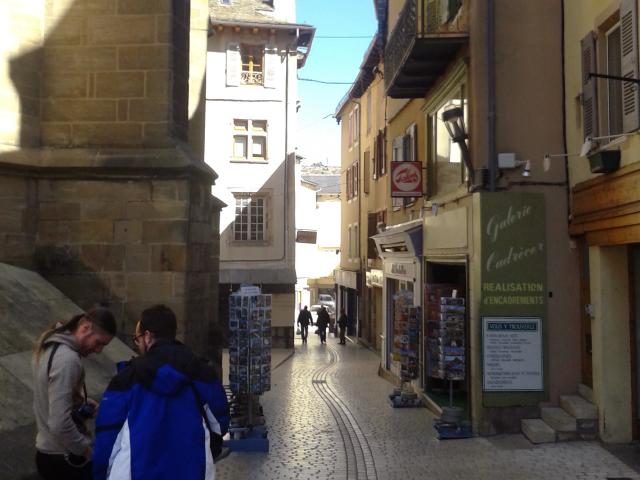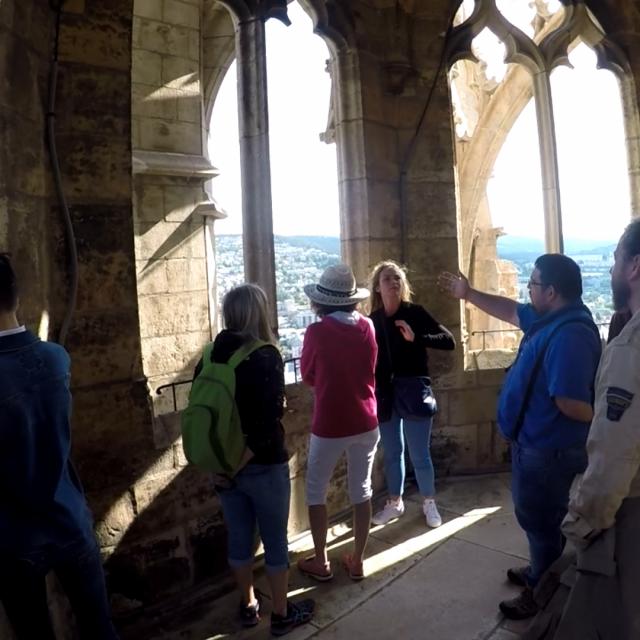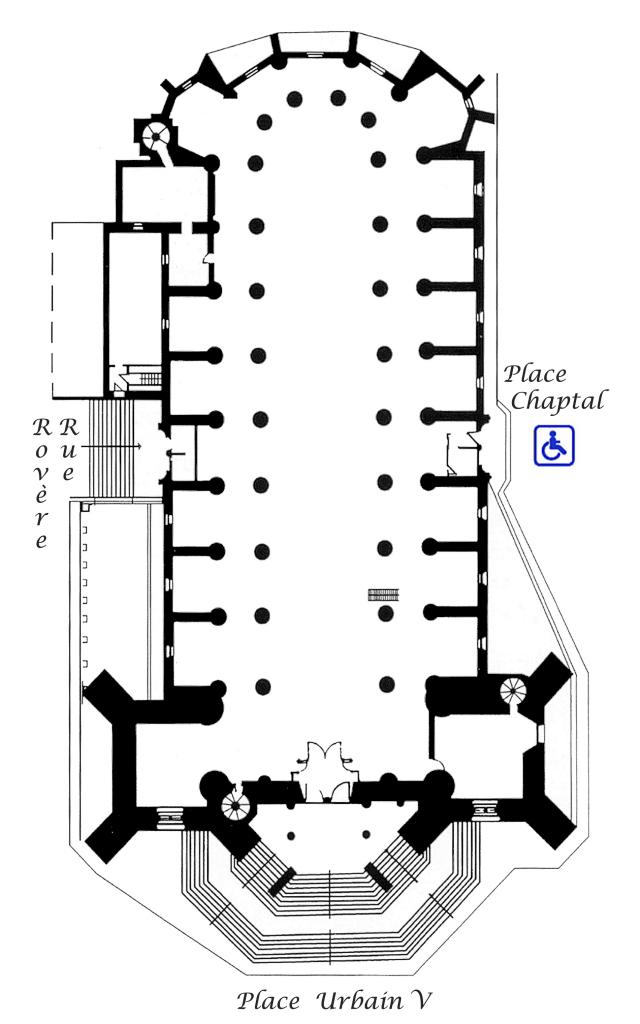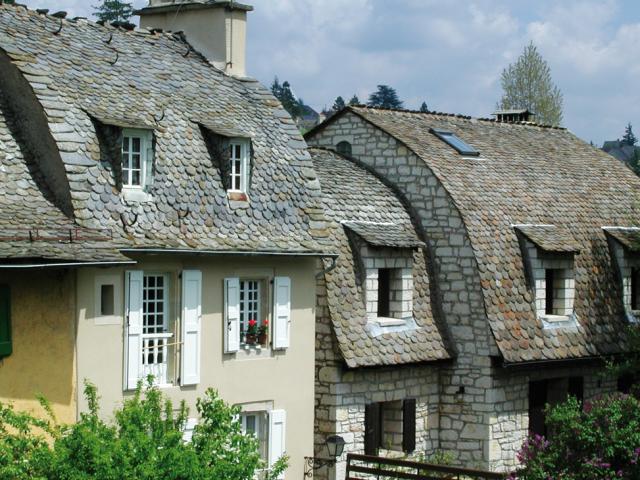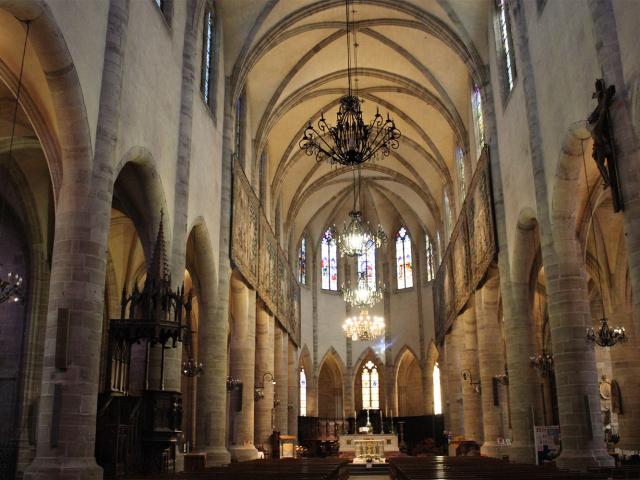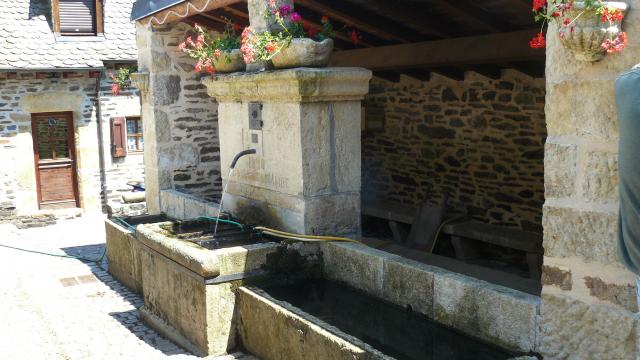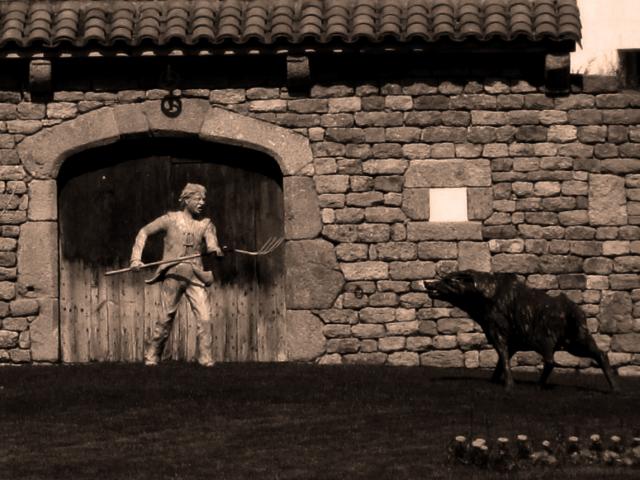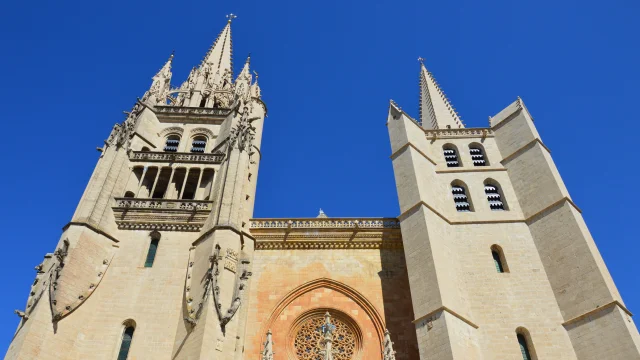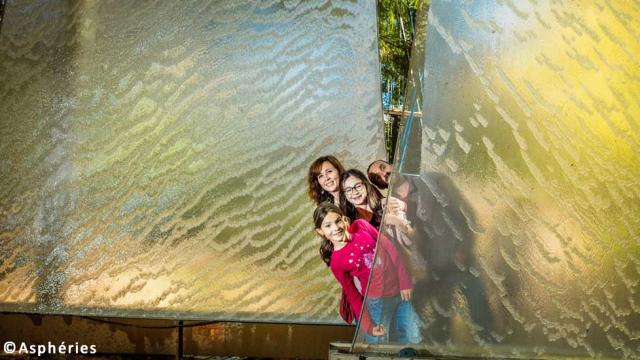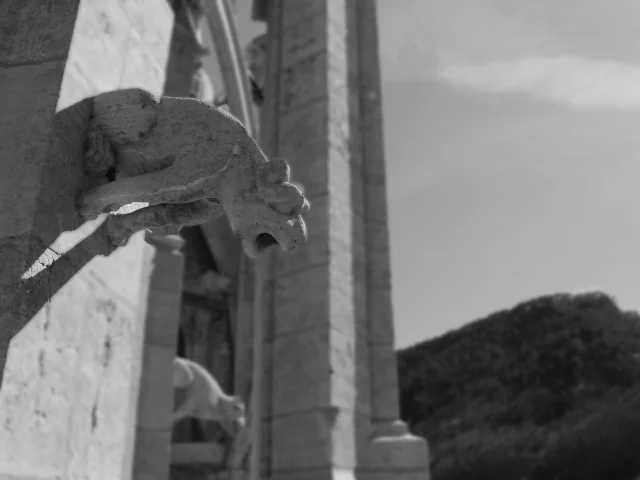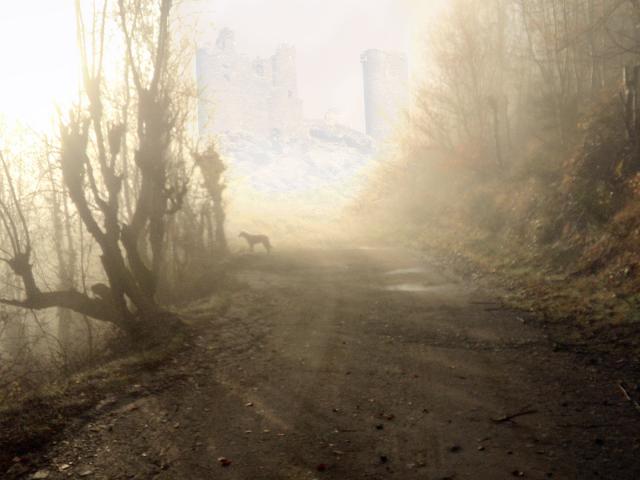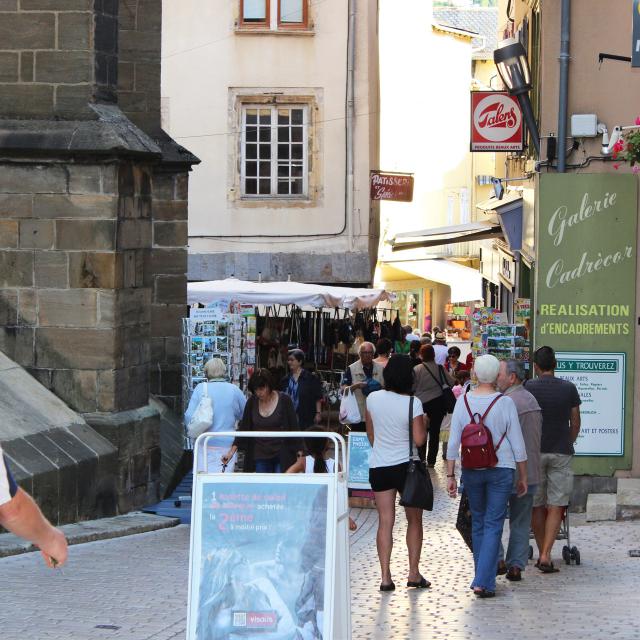The birth of the city.
It began, according to tradition, in the third century.
At that time, the inhabitants of the future Gévaudan were the Gabales.
The Alamanic barbarians invaded the country and captured Privat, bishop of the Gabales.
Chrocus, leader of the Alamanics asks him to order the Gabales to surrender.
Privat refused and was martyred near the caves of Mont Mimat.
Having become a renowned saint, the important pilgrimage to his tomb will lead to the development of a city: Mende
In the middle Ages, …
… The geographical location of Mende, at the crossroads between Languedoc and Auvergne, favors the commercial and artisanal activity of the city, wich becomes a prosperous and powerful city.
In the 10th century, at the latest, the Bishopric is situated in Mende.
In 1161, bishop Aldebert III du Tournel paid homage to the King of France Louis VII on behalf of the diocese of Gévaudan.
Delighted with this rallying, the king then granted the bishops the rank of Count of Gévaudan and therefore temporal power over the whole province.
Faced with the opposition of the local barons and to symbolize its new status the bishop had built ramparts whose shape was still that of the boulevard surrounding the historic center.
… Mende therefore becomes an ecclesiastical principality.




